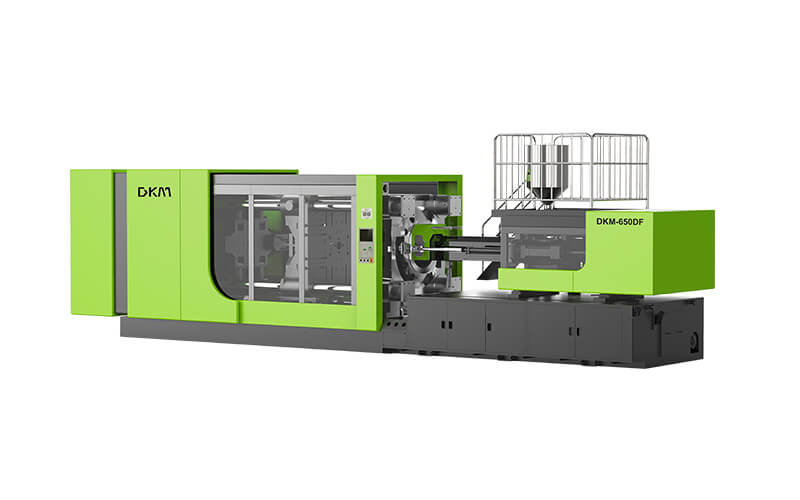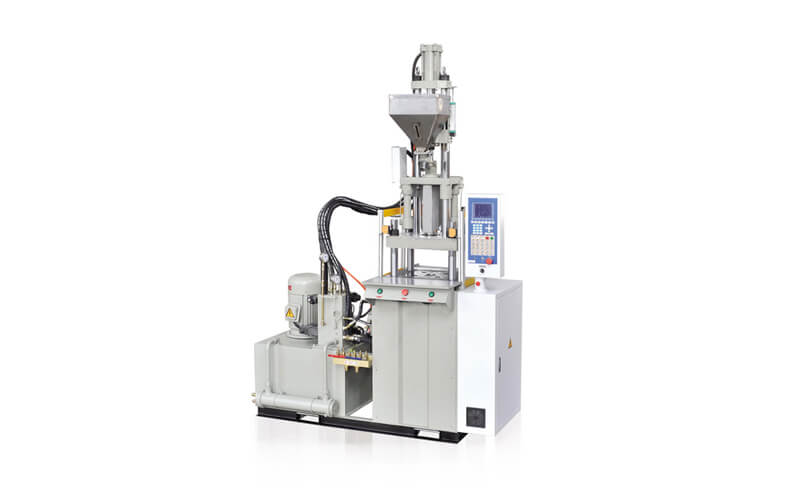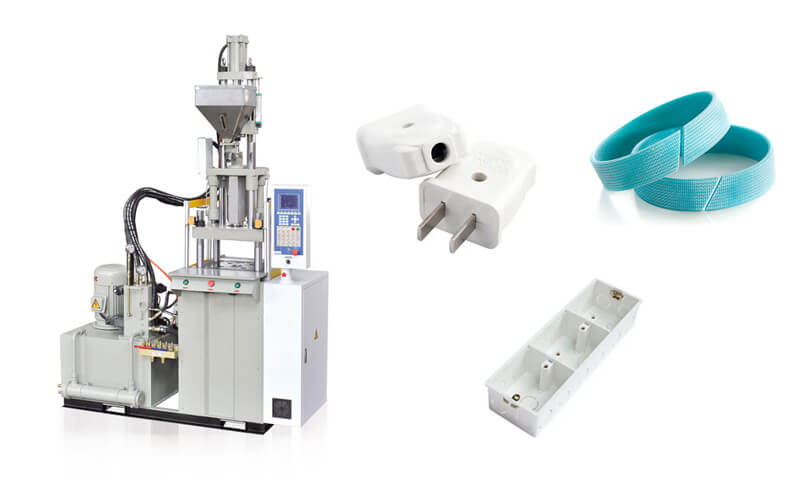

Clamping and injection units or plane orientations are the basis for the division of injection machines into two classes: horizontal and vertical molders. horizontal and vertical molding machines offer their benefits. The type of product produced, quantity of product manufactured, available space, and specific requirements for production are applied to choose the machine.
This blog will discuss in detail the difference between these two types of molding machines including their features and advantages.

The adjective "horizontal" refers to the alignment of the machine's gripping part and injection part in the horizontal direction, compared with one another. However, these equipment are incredibly versatile and are used extensively across industries in the manufacturing of a large proportion of plastics, namely automotive components, consumer products, electronics, medical devices, and more.
By using a horizontal injection molding machine, you can manufacture plastic components at a high rate. It operates by compressing a plastic melt in a mold and injecting it under high pressure until it hardens, thereby attaining the desired shape.
The key elements of a horizontal injection molding machine are a molding unit, a clamping unit, a mold, a hydraulic system, and a control panel. The injection unit contains an element that is either a screw or plunger mechanism; it exerts the molten plastic material in the mold cavity. The clamping unit keeps the two halves of the molds in uno junction during the injection and cooling processes.

A vertical injection molding machine is the next type of instrument utilized for the production of plastic parts. Excessively thin or thick parts may lead to issues such as warping, cracking, residual stress, and other possible defects. The injection molding method is not suitable for intricate or extremely small parts, as vertical machines do not allow for good accuracy.
The horizontally mounted injection molding equipment provides a versatile scope of features making them suitable for different manufacturing operations. Here are the key features:
Horizontal Configuration:
The fundamental feature that is a distinctive feature of a horizontally inserted molding machine is its horizontal configuration. In this case, the mold is closed down like a clamp while the injector injects melting material into the mold horizontally. This up-to-date design recommends the way how to get to mold and in some cases, it is possible to automate the process and integrate it into the production line.
Clamping Unit:
With a sturdy clamping device, an injection machine designed in the horizontal direction can hold the mold half steadfast in position during the injection process. The clamping unit comprises a fixed plate and a moving plate that can work mechanically or hydraulically to open and close the mold.
Injection Unit:
The melting and injection section of the horizontal molding machine is enabled by the injection unit that warms and injects plastics into the mold cavity. The injection molding machine generally has a screw that brings the plastic resin forward and positions it in a precise direction into the barrel where it is heated via heat exchange. Following that, it is homogenised along the way with the rotation process and is then injected into the mold cavity.
Hydraulic System:
Horizontal injection molding machines apply mostly hydraulic systems that provide the clamping, injection, and ejecting mechanisms with the needed power. The precision of hydraulic control systems, which enable various pressure and speed settings, ensures the best efficiency level and productivity rate.
Electric Servo Motors:
Modern horizontal injection molding machines can have electric servo motors used, which are devoid of any hydraulic systems, thus the energy efficiency, accuracy, and precision are enhanced. Using electric motors servo, motorist offers faster response times, lower energy expenditures, and softer operation apart from the hydraulic systems.
Mold Heating and Cooling:
Modern injection molding machines have robust heating and cooling features to attain uniform temperatures during the molding process. The temperature needs to be monitored constantly to vary the quality of the mold according to the required part and to prevent shrinkage or warping defects.
Automation Compatibility:
Dispensing machines with a horizontal injection nozzle very often are configured to operate in unison with automation systems and robotics for the optimization of output and production speed. Automation of extraction of plastic parts, cutting off the brackets, and quality assurance will help to greatly reduce the cycle time and cut down on the costs.
Multi-Cavity Molding:
Many horizontal machines operate with several cavities that are used in multi-cavity molds at the same time. This implies that manufacturers have the advantage to accelerate their production and this in turn leads to economies of scale that are attained by producing more pieces at each molding cycle.
User-Friendly Controls:
The current horizon interfaced in-line injection molding machines have an intuitive touchscreen and user-friendly controls like the ability to monitor and adjust parameters of temperature, pressure, and cycle time properly. Sensors and diagnostics systems with advanced monitoring and diagnosis capabilities facilitate real-time report completion with informed alerts and downtime prevention to optimize machine performance.
Safety Features:
A horizontal injection molding machine nowadays is armed with numerous safety traits to defend operators and avert accidents. Such elements will comprise the safety interlocks, the emergency-stop buttons, and guarding systems just to make sure that the machines are safe during mold changes and other routine maintenance operations as well as after they are serviced or repaired.
As seen, horizontal injection molding machines have very many features that make them applicable in various industries and environments. Some of these features include; help in the mass production of high-quality plastic molded parts, precision, and ease of use. These highly equipped and capable machines are integral components of modern manufacturers' engineering equipment but are still unable to replace human work.
Vertical Configuration:
One key difference between vertical injection molding machines from horizontal ones is that vertical machines are mainly of a vertical layout, the mold of which is fixed and clamped in a vertical position, and the machine injects the material from the bottom.
Space Efficiency:
Using machines vertically requires less ground for installation and provides a good tool for manufacturing companies of small size.
Insert Molding Capability:
Extrusion machines can manufacture these parts and they are suitable for insert molding where parts such as metal or other components can be inserted before injection.
Ease of Automation:
The layout of these parts enables automated part removal and other auxiliary procedures, resulting in increased productive outcomes.
Horizontal injection molding machines offer several benefits:
Accessibility:
The horizontal settings can be advantageous; with the eye-catching, injection units and mold close to the access, the creation of mold switching, maintenance, and troubleshooting is simple. Operators can enter the injection site momentarily hence they can inspect the mold and make adjustments where necessary.
Versatility:
The horizontal machines can run all kinds of molds and fulfill a variety of production requirements, implying that they are adaptable to different industry needs, which include automotive plants, packaging companies, consumer goods industries, and electronics manufacturers.
Automation Integration:
Serving a different purpose, horizontal machines are often adapted for use on automated production lines with vertical structures conveniently positioned and available for operators. Automation picks include parts ejectors, loading of parts, visual inspection, and packaging framed for consistency and higher capital productivity.
Consistent Molding Conditions:
The horizontal setup permits not only greater control over the temperature, pressure, and other molding parameters that produce the process to be carried out smoothly and efficiently but also provides the desired final products with absolute quality.
Multi-Cavity Molding:
Horizontal machines can be suitable for multi-section molds where several parts can be molded in each cycle of production. This feature therefore improves productivity as well as the Reduction of cycle times, which is very necessary for high volumes output.
Energy Efficiency:
Modern horizontal injection molding machines mostly come with energy-saving features such as electric servo motors and hydraulic systems with advanced technology; depending on the system, these machines result in power saving and operating costs reduction over the longer term.
As for horizontal injection molding machines, they are highly appreciated for the selectivity, simplicity, and functionality they provide, which is why, for more manufacturers they are a number one choice.
The vertical injection molding technology is extensively used for the production of various types of terminals, consumer electronics, power tools, automotive dashboards, computer equipment, open containers, cables, plugs, automobile parts and many other items.

Horizontal injection molding machine are an effective tool for creating plastic products in huge amounts.

· Commercial products (Mop Heads, electrical boxes, equipment housing)
· Automotive (colour-matched interior components)
· Medical components (medication trays, wall mounts and sharp disposal bins)
· Toys (high-end collectible models)
· Home products (air freshener units, wire ties, flower pots)
· Consumer goods (tackle boxes, bird feeders, barbecue accessories)
DKM has prioritized horizontal molding machines over vertical ones due to several reasons. The horizontal molding machines are superior to vertical ones as they are easier to use. They are available for all types of molten metals and are more efficient. Their display format is horizontal allowing for easier model picture, care, and placement of them at production lines that are automated.
On the other hand, horizontal machines can work with a large variety of molds and shooting needs that cross many industries because this is just what they are built for; that is, this provided makes it possible to offer consistent molding conditions and to make products with multi-cavity molds.
Furthermore, horizontal machineries usually have a high production capacity and an efficient energy consumption as to vertical ones. In addition, molds with horizontal directions are much more effective, and reliable, and offer a cheaper choice for various production needs.
